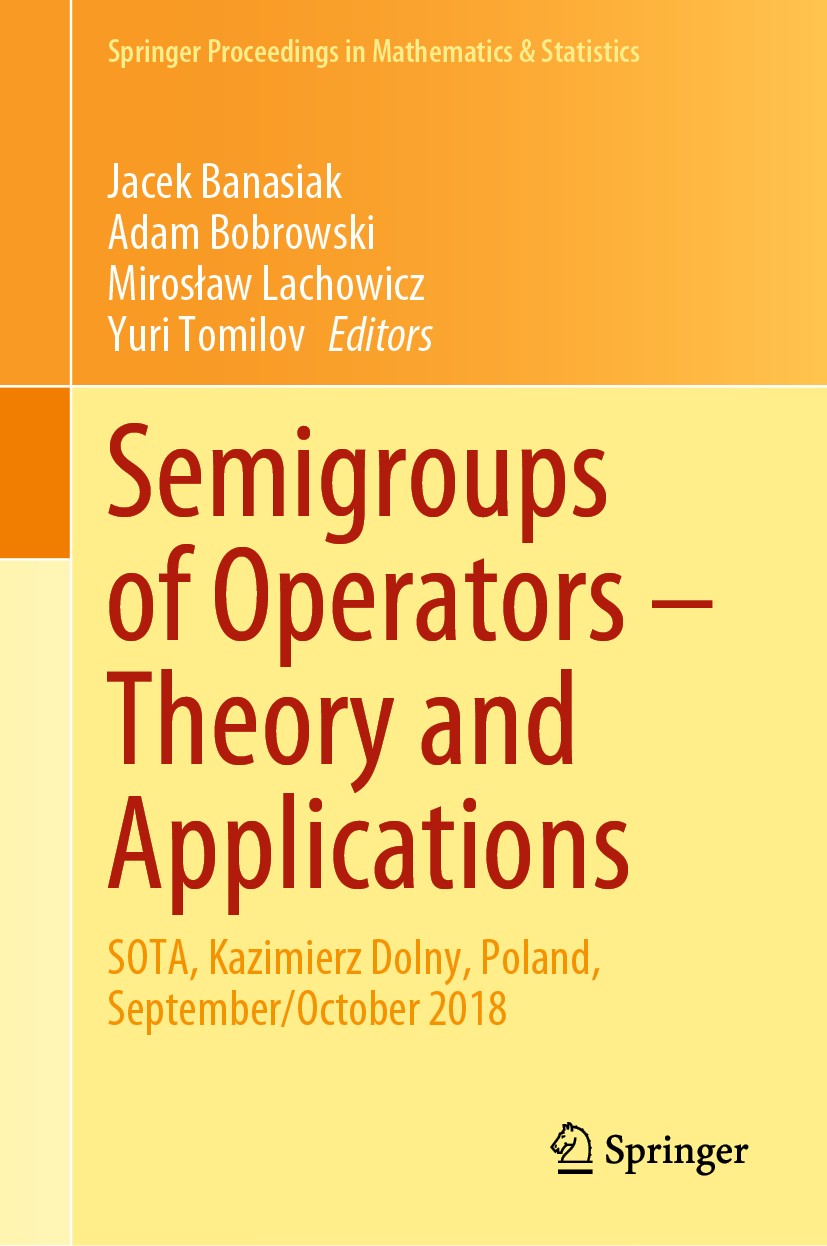| 书目名称 | Semigroups of Operators – Theory and Applications | | 副标题 | SOTA, Kazimierz Doln | | 编辑 | Jacek Banasiak,Adam Bobrowski,Yuri Tomilov | | 视频video | http://file.papertrans.cn/865/864930/864930.mp4 | | 概述 | Presents cutting edge results and up-to-date applications in semigroup theory.Includes contributions on stochastic control in biological problems and degenerate semigroups for ill-posed problems.Bridg | | 丛书名称 | Springer Proceedings in Mathematics & Statistics | | 图书封面 |  | | 描述 | .This book features selected and peer-reviewed lectures presented at the 3rd Semigroups of Operators: Theory and Applications Conference, held in Kazimierz Dolny, Poland, in October 2018 to mark the 85th birthday of Jan Kisyński. Held every five years, the conference offers a forum for mathematicians using semigroup theory to discover what is happening outside their particular field of research and helps establish new links between various sub-disciplines of semigroup theory, stochastic processes, differential equations and the applied fields. The book is intended for researchers, postgraduate and senior students working in operator theory, partial differential equations, probability and stochastic processes, analytical methods in biology and other natural sciences, optimisation and optimal control..The theory of semigroups of operators is a well-developed branch of functional analysis. Its foundations were laid at the beginning of the 20th century, while Hille and Yosida’s fundamental generation theorem dates back to the forties. The theory was originally designed as a universal language for partial differential equations and stochastic processes but, at the same time, it started | | 出版日期 | Conference proceedings 2020 | | 关键词 | functional calculus; stochastic Processes; evolution equations; operator theory; Cosine families; mathema | | 版次 | 1 | | doi | https://doi.org/10.1007/978-3-030-46079-2 | | isbn_softcover | 978-3-030-46081-5 | | isbn_ebook | 978-3-030-46079-2Series ISSN 2194-1009 Series E-ISSN 2194-1017 | | issn_series | 2194-1009 | | copyright | Springer Nature Switzerland AG 2020 |
The information of publication is updating

|
|
 |Archiver|手机版|小黑屋|
派博传思国际
( 京公网安备110108008328)
GMT+8, 2025-12-14 13:11
|Archiver|手机版|小黑屋|
派博传思国际
( 京公网安备110108008328)
GMT+8, 2025-12-14 13:11


